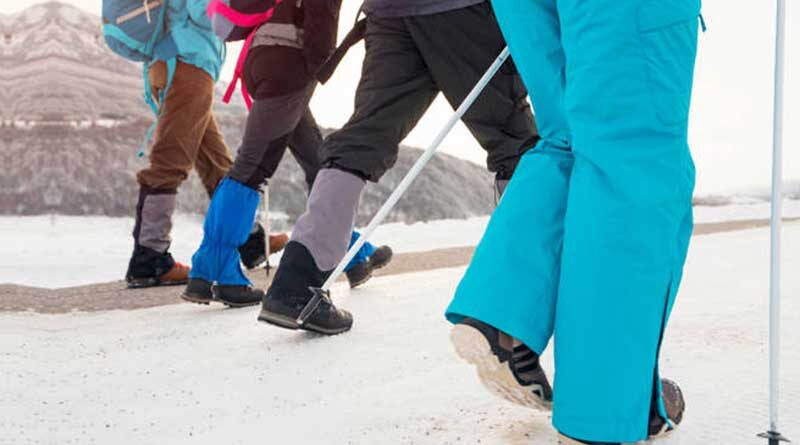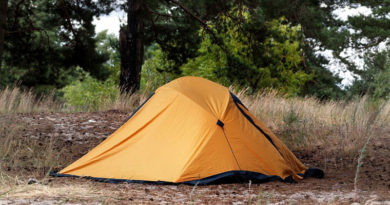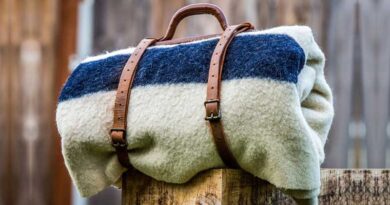Hiking Boots Vs. Snow Boots: A Comparison
When you’re traveling outdoors, you want to make sure that you have the right gear and that means doing a bit of research. One thing that you want to look at is the type of footwear that you’re going to use. Depending on where you’re going you may have had the recommendation to wear hiking boots or snow boots. You might have gotten opposite recommendations from different people. So, which ones should you be wearing and what’s the difference?
What are Hiking Boots?
Hiking boots are generally for all-purpose climbing and hiking. They’re great for cold weather because they have a lot of insulation to keep you warm and provide waterproofing or water-repelling features. They’re designed to help you trek over a lot of different types of terrain such as rocks, roots, and even potentially through streams.
Hiking boots generally have good traction and they will keep your feet more comfortable when you’re hiking for extended periods. All of this is great for those who want to go up and down trails or through the woods or other rougher areas. But there are a few things to keep in mind before you decide that hiking boots are the way to go.
These boots are designed to give you protection but still be lightweight than snow boots. This is going to be a benefit for those who want comfortable and easy-to-use shoes. These are a little more maneuverable and you’ll be able to wear them for more extended periods. They are lightweight and have added breathability with these shoes over snow boots.
The Downfalls
Generally, these boots have a high collar but not always. This means they don’t always have the ankle support that you want for slippery terrains, like ice. They also don’t have the same level of waterproofing that you’re going to get with true snow boots. Even though they are designed to protect against most wet weather.
You’ll find that winter boots are not as good for mud either, because they will tend to absorb that mud and the moisture that goes with it. You end up with a lot of extra weight on your shoes and then, gradually, some water gets into the inner portion of the boot which is going to make you quite uncomfortable.
Not to mention these boots aren’t close enough to the ankle at the top to keep snow from getting into them. If you happen to walk through very deep snow you’ll end up with it falling in around the top of your shoe. It defeats the entire purpose and definitely leaves you cold, wet, and very uncomfortable.
What about Snow Boots?
Snow boots are designed to be used for just that, snow travel. They’re great for different types of terrain and different situations. But provide you with all of the assistance you need to stay warm and dry while you’re walking around outside in the middle of the winter or even during a snowstorm. They are insulated and have waterproofing to keep everything out and keep you comfortable for longer treks.
These boots are designed for wet conditions, including snow and even thick mud. They can work well on thick, heavy, wet snow or even the light powdery stuff. That’s because they have rubber on the bottom, which means that water and moisture can’t get up through them no matter how much you’re walking through. And they’re easy to clean off when you need to.
The top of these boots is designed to extend up the leg and at least to the calf, which means you’re going to have more protection against tall snow and falling snow. Plus, these boots have a tight cuff, which means that snow and moisture can’t get down into the inner portion of the boot, even if you step in snow that’s over the top.
The boots are also made with thick leather, nylon, or a mix of the two to make sure that they are waterproof all the way up and that they help you stay comfortable as well. And all of this is going to be important anytime you head outside, whether just to clear your own driveway or to go for a trek in the mountains or on a trail.
The Downfalls
On the other hand, it’s important to note that there are a few drawbacks here. For example, snow boots are designed to be 100% waterproof. They’re completely sealed and could cause your feet to start to sweat inside. That means you’re going to have moisture inside the boot if you’re wearing them for too long. You can overcome this problem by wearing the right type of socks to wick away that sweat.
You’ll also find that these boots are a bit bulky and heavy. If you’re trying to stay warm and dry that’s definitely going to be worth it. Otherwise, you might find them a little annoying to try to walk in for extended periods. You’ll need to get used to the added weight, especially over traditional hiking boots.
Summary
| FEATURE | HIKING BOOTS | SNOW BOOTS |
|---|---|---|
| Traction | Most high-end models provide good traction | Yes |
| Insulation | Comes in both insulated and non-insulated versions | Good insulation |
| Waterproof Upper | Yes in Gore-Tex boots | Yes |
| Waterproof Sole | Mostly | Yes |
| Rubber Sole | Sometimes | Yes |
| Sealed Cuff | No | Yes |
| Lightweight | They are designed to be lightweight | Mostly heavy |
| Comfort | Comfortable | Not very comfortable |
| Ankle Support | Only mid-height boots | Yes |
Conclusion
When it comes down to it, snow boots and hiking boots both have their own benefits. You’ll need to think about which of those benefits works the best for you. Are you looking for shoes that are going to be comfortable to wear for a long time? Or do you want something that will keep your feet warm and dry? Are you looking for shoes that are going to give you protection against more snow at the top or something that’s built to give you a bit more traction on rough terrain? You’ll need to think about the most important features for you and go from there.




